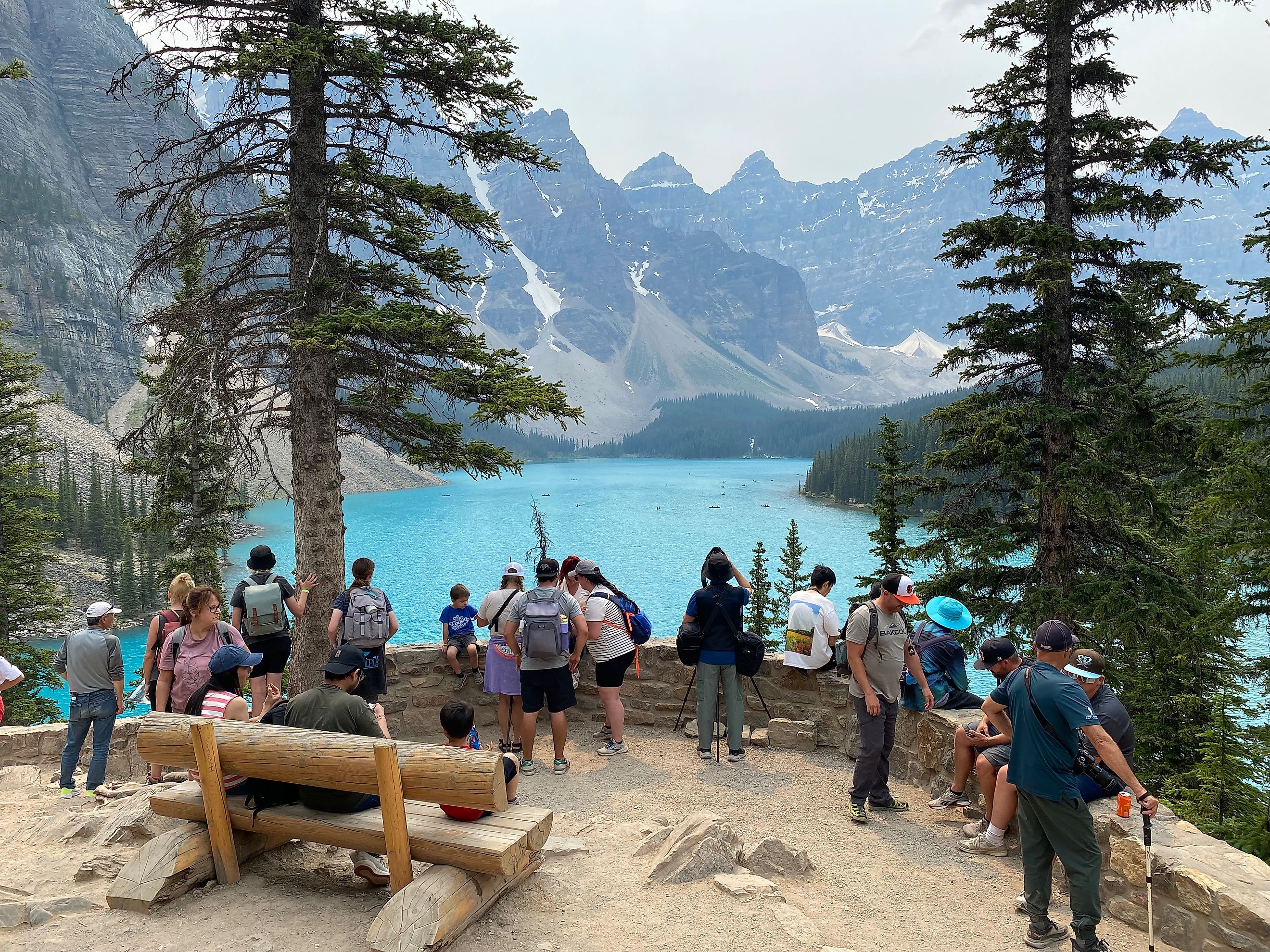
Banff's Balancing Act of Crowds and Hidden gems
Last year, Banff National Park set a new attendance record with 4.3 million visitors. Based on what I saw during my recent (mid-week) trip, the Alberta-based preserve (which is part of the incomparable Canada Rocky Mountain Parks UNESCO World Heritage Site) looks poised to break that record yet again. To put this in perspective, just four U.S. national parks bested Banff in 2023 - and all but the top-dog (i.e. Great Smoky Mountains) did so by only a few hundred thousand people.
As a former Calgarian, I have always had a sweet-spot for this beautiful and exciting place. However, I have also been exposed to a fair-share of cynicism over the years - mostly relating to Banff's bloated tourism scene. Well, I'm here to go to bat for my beloved backyard by giving an honest, yet optimistic rundown of my 2024, peak-season experiences. Yes, the crowds are thick in certain areas, but Banff has implemented plenty of effective strategies to help ease frustrations. I'm also happy to report that there are still plenty of overlooked wilderness havens to retreat to. Let's get into it.
Parking
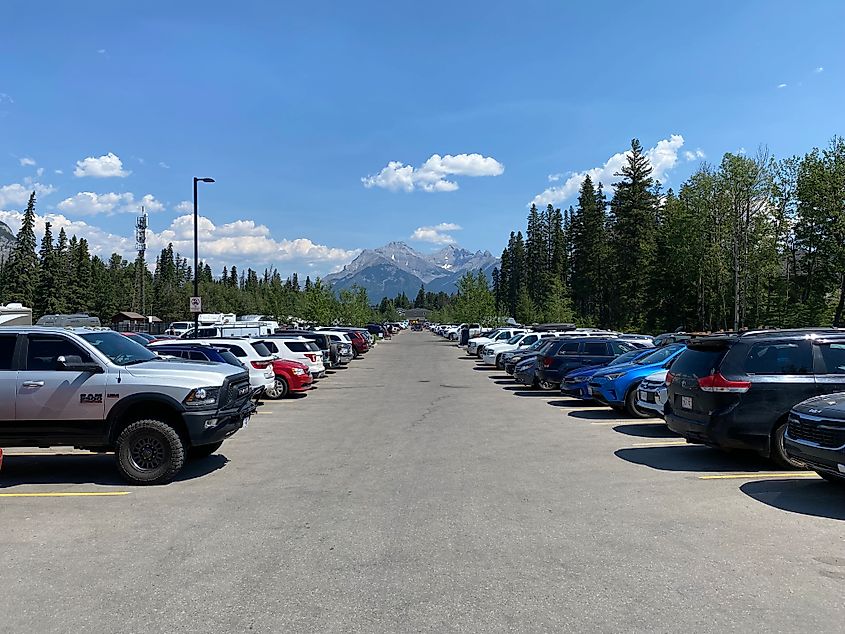
Back in the day, by which I mean pre-2020, one could simply hop off the Trans-Canada Highway at either the Banff Avenue or Mount Norquay exits and cruise into the Town of Banff. There was never a surplus of parking, but a few blocks of scouting always produced a free spot on one of the secondary or residential roads. I never really thought about what season or day of the week it was, I simply knew that I could navigate the mountain town without much fuss.
Nowadays, almost all of the street parking has been converted to paid or permit spots - and they're still usually taken. To make life easier, an enormous free lot was developed next to the train station. You can park there (for up to nine hours) and then either walk downtown (which is only five minutes away) or take the refreshingly-effective public transit system.
The situation at Lake Louise has changed even more dramatically. Again, in the prior decade, I was able to simply drive straight to the Fairmont Chateau Lake Louise parking lot (at the east end of the photogenic lake). Today, it is predominantly reserved for buses, leaving only a smattering of passenger vehicle spots, which fill up before the sun rises and cost nearly $40 for the day. Parking at Moraine Lake (i.e. the other, even more spectacular lake just up the road from Lake Louise) is now strictly for official shuttles.
Public Transit
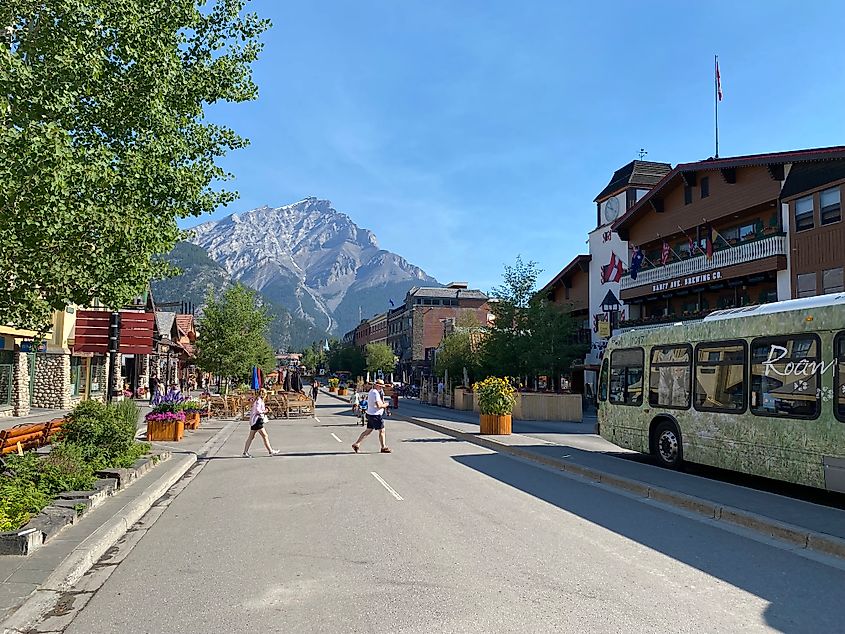
Banff National Park now operates regular buses and shuttles (i.e. stubbier buses) to and from all of its major attractions. Some are free (like the one up to Norquay, for anyone wanting to try the Via Ferrata tours or tackle some of the less-traveled trails), and others cost anywhere from $2-$6 (one-way) to get to such destinations as: Tunnel Mountain Campground, the Fairmont Banff Springs Hotel, the Banff Gondola, Cave and Basin National Historic Site, Johnston Canyon, and Lake Louise. All you have to do is wait at one of the many signed bus stops and pay in exact change when boarding, or purchase tickets in advance at the visitor center. In some cases, there are precise pick up locations. For example, the Roam buses travel to Lake Louise from downtown Banff, whereas the Parks Canada shuttles base out of the Park & Ride lots at Lake Louise Ski Resort.
I was genuinely impressed with how smoothly the whole system operated. This local network, in conjunction with the inexpensive Banff-Calgary buses, has made it so that tourists don't even need a car to get a broad overview of the world-famous town/park.
Pedestrian Street
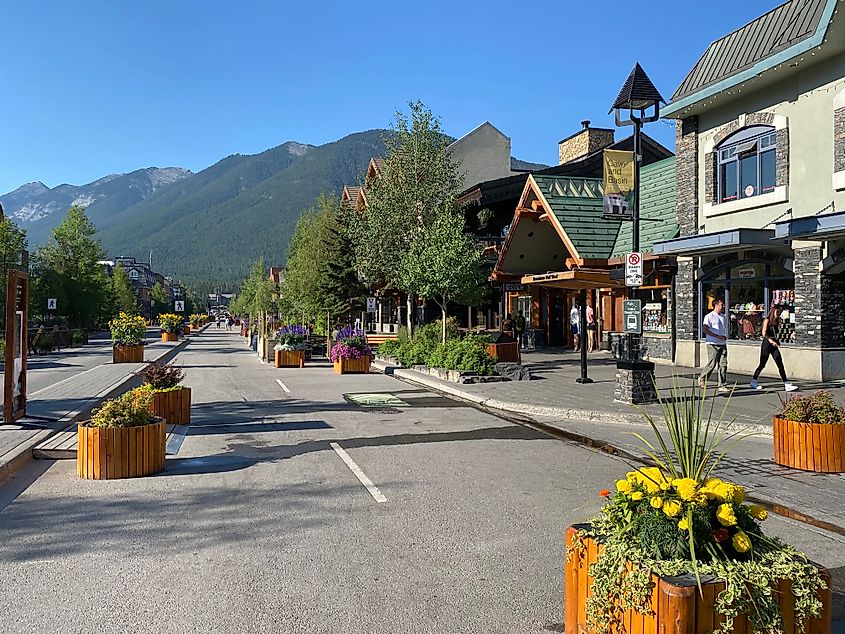
Another improvement the Town of Banff has made since my last visit is the implementation of a pedestrian-only strip along much of Banff Avenue. Yes, this bottlenecks car traffic even further, but if you heed the suggestion to park at the all-day free lot and explore the region by foot (which is the most satisfying way to drink in the shops and scenery anyway) then you will be treated to a worry-free wander. Every so often, one of the local Roam buses will ding its bell and slowly proceed to its central checkpoints, but other than that, the entire stretch remains wide open to pedestrians, cyclists, and the occasional skateboard or scooter. As a result, mountain gazing, lustful window shopping, international people-watching, and shameless selfie taking can all be practiced with reckless abandon. Not only has this change made things safer, but now the hordes of tourists can fan out across a four-lane road, rather than squeeze onto two measly sidewalks.
I noticed that the residents of Banff were being called on to vote for or against this protocol for subsequent summers. I hope they choose to keep it. And given the example set by neighboring Canmore, I think they will.
Attractions: Dodging or Embracing the Crowds
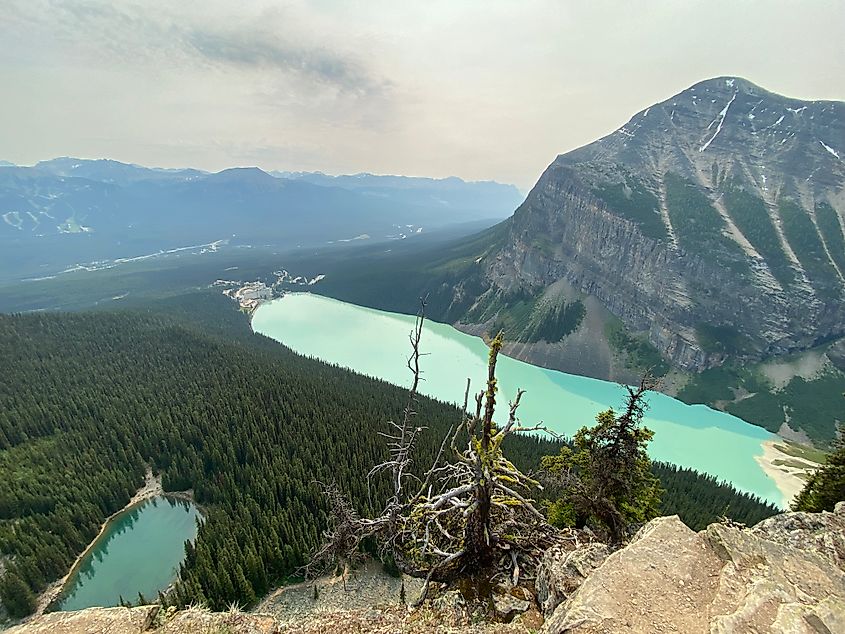
Whenever someone gives me the groan over "touristic places," I always point out the obvious: They're popular because they're awesome. Case in point: Lake Louise, Moraine Lake, and Johnston Canyon are some of the most beautiful places I've ever laid eyes on. So what if a small section of their overall grandeur is jammed with people taking the exact same pictures? Rather than get frustrated, it is possible to conjure gratitude over the fact that you get to be in a place that so many people have traveled far and wide to get to. Besides, when the crowds get fatiguing, you can always make a push for the backcountry. There are lots of appealing places that only a fraction of tourists know about, or expend the effort to get to.
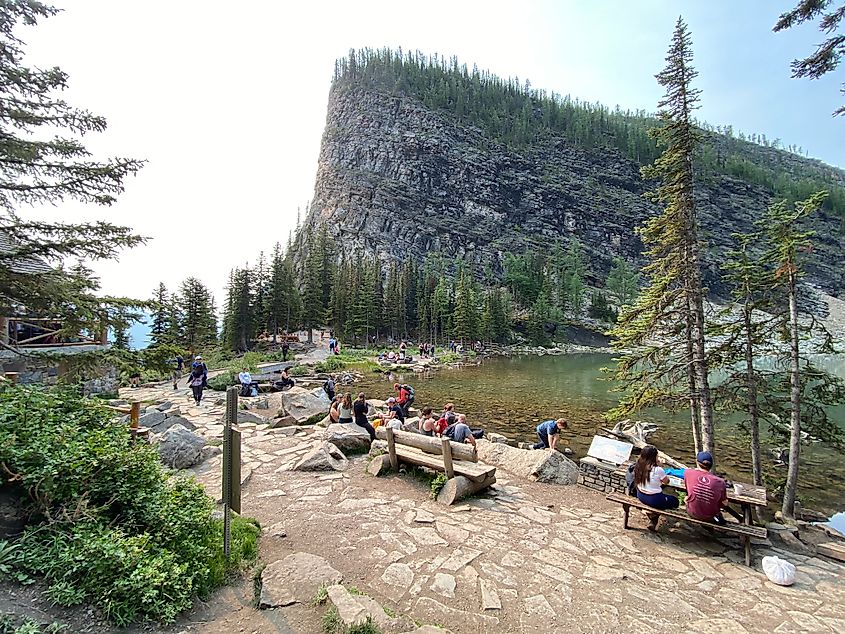
By my non-scientific assessment, I would guess that 20% of the people who take the shuttles to the eastern shore of Lake Louise proceed to the Lake Agnes Tea House - a cozy and thirst-quenching log cabin built in 1901 on the shore of the eponymous alpine lake. The trail is about 7.4 kilometers (out-and-back) and gains 384 meters in elevation. This is modest by Rocky Mountain standards, but still taxing enough to weed out the bulk of the crowds. Don't get me wrong, it is still a very social hike, and there will probably be a line for tea (or hot apple cider) when you get there, but this is still just the first filter.
From the tea house, those with some oomph left in their legs may wish to walk around the backside of Lake Agnes and up to the Big Beehive Lookout. The additional uphill clicks reduce participation by (probably) another 80%, meaning that most travelers will miss out on the arresting bird's-eye-view of Lake Louise and Mirror Lake.
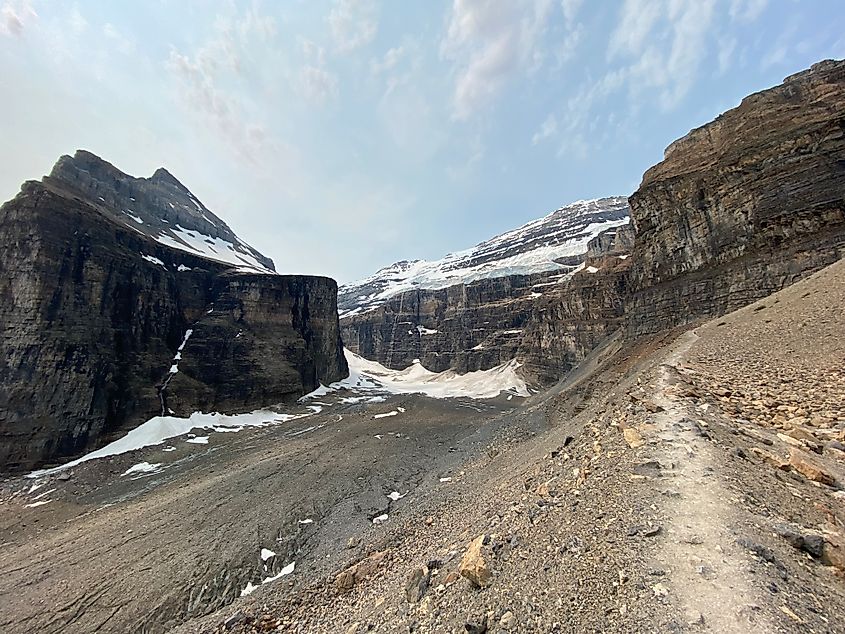
This crowd-thinning and aesthetically-rewarding trend continues for those who proceed to the Plain of Six Glaciers (which also boasts a rustic tea house). Backcountry purists may still gawk at the somewhat steady stream of hikers along this route, but we haven't even touched on the mega mountains in the area. I hiked Cascade Mountain (2,998 meters/9,836 feet) on a sunny Friday in the middle of July and only saw about a dozen people on the 20-kilometer (out-and-back) trail. If you're fit and sure-footed, then hit up Cascade, Rundle, Bourgeau, or Temple, and you'll have the forest switchbacks and rocky slopes mostly to yourself. Note: this also means an increased risk of bear encounters (so bring spray and make some noise).
Camping
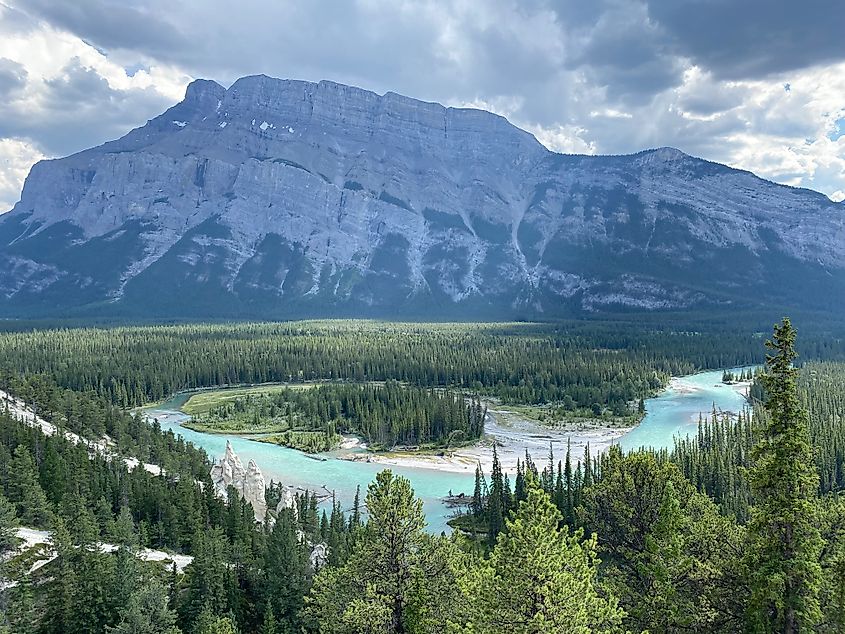
Okay, so the one topic I can't pull punches on is camping. The drive-in campgrounds and backcountry tent sites fill up incredibly quickly. And for you fellow "van lifers" who think you can find a stealthy spot somewhere, think again: the rangers are on it! I was only able to snag an unserviced site at Tunnel Mountain Village Campground on the Wednesday night. This meant backtracking to Canmore's Wapiti Campground (in the middle of the night, mind you, after being shooed along by a ranger) on the Thursday, and then even further to Exshaw's community campground on Friday, just to be within a 50-kilometer drive of Banff for the following day's explorations. I would love to see Banff open up the train-station lot for overnight camping (it already has bathrooms and garbage bins, which would eliminate the two potential drawbacks) or somehow expand the capacity of their existing campgrounds and hostels. As things stand, spending the night in the national park is only for those who planned far in advance, or who have the luxury of spending hundreds of dollars per night on a hotel room.
The gradual squeezing out of "dirtbags" (i.e. climbers, backpackers, van lifers, and in some cases, surfers) is something Canadian parks, as a whole, have made a bad habit of. This is all the more frustrating because every single business and government building in these areas openly brags about how inclusive they are (the wealthier the place, the more egregious this becomes). So that's my little dig for this article: Either make these publicly funded spaces more accessible to the vast majority of Canadian citizens (and other budget-conscious travelers), or drop the pageantry.
Parting Thoughts
Despite the crowds and escalating expenses, Banff (both the town and national park) continues to be my happy place. I have seen the Cascades, Pyrenees, Caucasus, and Alps, but Alberta's portion of the Rocky Mountains continue to claim my utmost admiration. Banff is a big part of this. I love its natural side, but I also appreciate its rampant tourism. Those dinky souvenir shops, packed patios, and (certain) camera-riddled trails inject a positive energy into the mix. Ultimately, the beauty is in the balance. For in Canada's oldest national park, you can sneak off into untouched wilderness for an introspective hike, and then return to the main drag for a sun-soaked pint in good company. Does it get any better than that?











